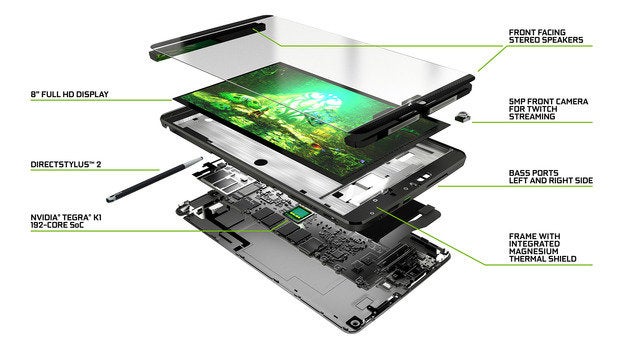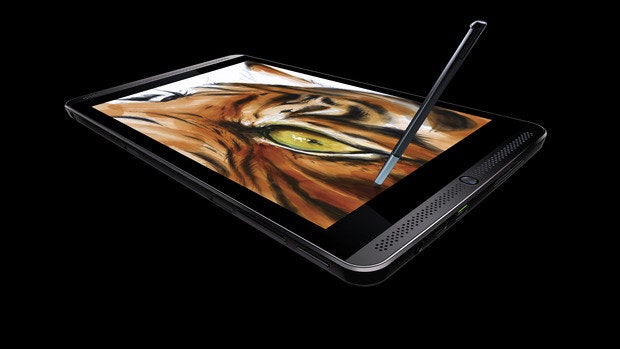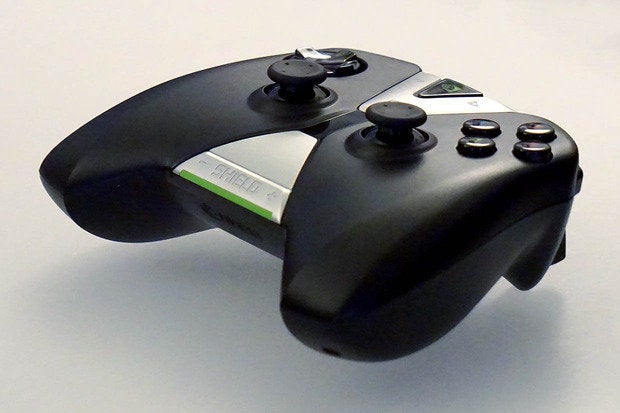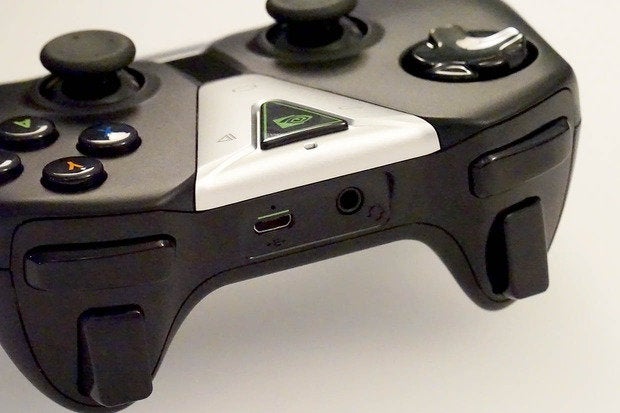The original Nvidia Shield was a decidedly niche product. An awkwardly large controller with a 5-inch 720p display hinged on top, it was a showcase for the Tegra 4 processor, a neat way to stream games, but the shape cost ($349 at launch) kept it from being useful for much else.
Now Nvidia is back for an encore with the Shield Tablet, it definitely seems like it’s not destined to be a niche product anymore. ile the new Shield is aimed at gamers, the new tablet form factor makes it useful for a lot more than just games. And with attractive pricing (starting at $300) powerful hardware, it might just be one of the best tablets of the year.
I recently got a little hs-on time with the almost-finished product ahead of its ly 29 release, came away impressed. Nvidia’s new tablet won’t be the right choice for absolutely everyone, but it should please gamers while appealing to a much broader audience.
A showcase for the Tegra K1
You’d expect a gaming-focused tablet to have high-end hardware, the Shield Tablet certainly takes that to heart. It’s a showcase for the Tegra K1 with 2GB of RAM. This is the version with four ARM Cortex A15 C cores, not the dual-core 64-bit “oject Denver” version, which we still haven’t seen yet. Nvidia’s chip brings the company’s “Kepler” graphics architecture to a mobile ARM system-on-chip (SoC). That means very powerful graphics hardware the same overall feature set as modern graphics cards.
In my limited time hling the tablet, everything felt snappy responsive, as you’d expect. Games apps ran smoothly launched quickly. ly, getting a real firm grip on how the performance stacks up against other tablets is the kind of thing best left for a more in-depth examination, but nothing ever felt at all sluggish.
 Nvidia
NvidiaThis exploded view gives you an idea of how the parts of the Shield tablet come together.
A push for high-end hardware doesn’t begin end at the SoC, though. A tablet is much more, Nvidia spent some time making sure the rest of the device is really gaming-worthy. The 8-inch I D display features a resolution of 1920×1200. That’s 283 pixels per inch, maybe a little low compared to today’s premium tablets, but color accuracy viewing angles looked really good, it’s a good target resolution for gaming. It strikes a good compromise between sharpness graphics performance.
The tablet itself is a little bit on the thick side, but not especially heavy. At 390 grams, it’s just a little heavier than the id mini, but not so much that you really notice. Nvidia will sell a $40 cover that attaches magnetically doubles as a st to hold the tablet up at a good angle for playing games with the controller, or watching video.
Both the front back cameras are 5 megapixels, though I didn’t get a good sense of their overall quality in Nvidia’s poorly-lit demo setup. Stereo front-facing speakers sit on the left right of the screen in lscape orientation, they pump out pretty impressive sound. The -Fi radio is quite robust (2×2 MIMO, 2.4 5GHz, up to 802.11n), a must for making the most of Nvidia’s GameStream technology, which lets you play a growing number of games remotely on your Shield device (provided your gaming has a modern Nvidia graphics card, of course).
There’s a built-in stylus, which Nvidia claims is twice as responsive as that in the Tegra Note 7. I can’t speak to whether that is accurate, but in my brief time with it, it felt quite good, with minimal lag impressive accuracy. The 19.75 watt-hour battery should provide about 10 hours of video playback, according to Nvidia, comparable gaming time to the original Shield hheld console.

Nvidia is really proud of its homegrown Dabbler stylus-driving art app. It’s included with the Shield Tablet.
The tablet launches in the U.S. on ly 29, in Europe on August 14, in other regions in the fall. At launch, only a 16GB -Fi version of the tablet will be available, priced at $300. thin a couple months, Nvidia will introduce a $400 version with 32GB of storage 4G E, supporting AT&T T-Mobile carrier bs in the U.S.
at about a controller?
Tablets are great, but if you want to stream a game through GameStream, or play one of those Shield-enhanced controller-supporting Android games, you’re going to want buttons sticks. So, the Shield Tablet is accompanied by an optional $60 Shield controller. It feels a little better than the original Shield console, but is still slighly too bulky, the tension on the sticks is too tight.

If you buy a Shield Tablet, you’re going to want to pick up the $60 controller.
The tablet supports up to four controllers at once, so when you plug it into your TV (via the mini HDMI port), you can have a “console experience” playing couch co-op games. To minimize latency increase bwidth, Nvidia is using -Fi Direct instead of bluetooth. It works: the controller is fast responsive. I played Grid 2 streamed from a gaming laptop on the local network to a Shield Tablet plugged into a TV. The visuals were sharp with almost no visible compression artifacts, there was very little input latency. It was almost, but not quite, like having a with a wireless controller hooked up directly to the TV.
It’s got a few other neat tricks up its sleeve. There are volume buttons basic Android controls (Back, Home) on the controller, an integrated microphone, so you can operate the tablet from across the room entirely using the controller. “OK , unch Netflix” works just as it does with Now on any device, only you’re talking into the controller, so you can operate the tablet when it’s plugged into your TV across the room.

There’s a three-pronged headphone jack on the controller, so you can wireless pipe the tablet’s sound mic through to your gaming headset.
There’s a headset jack in the controller, too: plug in a headset, the stereo sound microphone are disabled on the tablet piped through the wireless controller.
Twitch streaming, right from your tablet
rhaps the coolest trick of the Shield Tablet is its ability to stream games to Twitch. It’s a first for an Android device (the Twitch app is for watching, not broadcasting). Virtually anything you put on the screen, whether it’s an Android game, video playback, or a game played remotely via GameStream. The 5 megapixel front-facing camera can give you that little picture-in-picture effect, so your Twitch viewers can see you in the corner if your stream, getting your game on.
Streaming to Twitch is very easy. st hold down the back button for a couple seconds a menu pops up, allowing you to stream to Twitch or just record videos of your gaming exploits for uploading to another service like YouTube.
More than just gaming
There aren’t a lot of Android devices that will stream Netflix in 1080p. ‘s Nexus 7 (2013 model) the new Samsung Galaxy Tab S are notable exceptions. Nvidia now joins that elite club with the Shield Tablet, though I suspect 1080p Netflix streaming will be pretty common in the coming year.
The importance of this reveals an important point: Android gaming just isn’t to the point where a device can find a substantial audience exclusively as a gaming device. This was the biggest problem with the Shield console: it was designed in such a way that it was nearly useless for games not built to use the controller. The Tablet fixes that by being, first foremost, a good Android tablet. It has full access to ay, all those touch–swipe games are going to play just fine. The Shield Tablet doesn’t sacrifice it’s ability to comfortably browse the web, or read comics, or curl up with a good e-book, for the sake of gaming.
Updates from Nvidia, including Android /h2>
As with the Shield console, updates to the Shield Tablet will come directly from Nvidia. The company has been rock solid about providing updates to the first Shield, including both Android system updates improvements to its own software. Software that is really not very heavily modified from stock Android, we’re happy to say.
I asked when customers can expect an Android /a> update. Naturally, anyone buying an Android device is concerned about being stuck on “old” KitKat after ‘s hot new OS ships in a few months. Nvidia says they’ve been working very closely with on the new release, in fact, many of the stage demos at I/O were made on Nvidia hardware. It’s confident that it can deliver an Android update to the Shield Tablet as soon as says the OS is ready to release on third-party devices, the Shield Tablet will be one of the first devices in the world to get Android
Nvidia’s version of Android for Shield devices doesn’t deviate far from stock Android. There’s the addition of Tegra Zone (to be redesigned renamed Shield Hub upon release of the tablet), a few tweaks like battery level monitors the integrated Twitch streaming video recording, but the interface is left largely untouched. This bodes well for rapid software releases.
ll this be Nvidia’s first mainstream hit?
This is Nvidia’s third self-produced consumer product, following the original Shield console the Tegra Note 7 tablet. Neither of those really caught on. From my limited time with the Shield Tablet, it’s easy to imagine it doing a lot better in the marketplace. Its stard tablet form factor integrated styles give it the mainstream appeal of the Tegra Note, while also satisfying gamers with high-performance hardware, game streaming from s (with Nvidia graphics cards), Twitch integration.
And the price is right. At $300 for the base model, it’s not cheap, but it’s not more than you’d expect to pay for a high-performance 8-inch tablet. t’s face it, though: you’re not going to get away with spending only $300. You’ll want the controller the cover, which pushes the price up closer to $400. Still, this is pretty good bang for the buck.
















